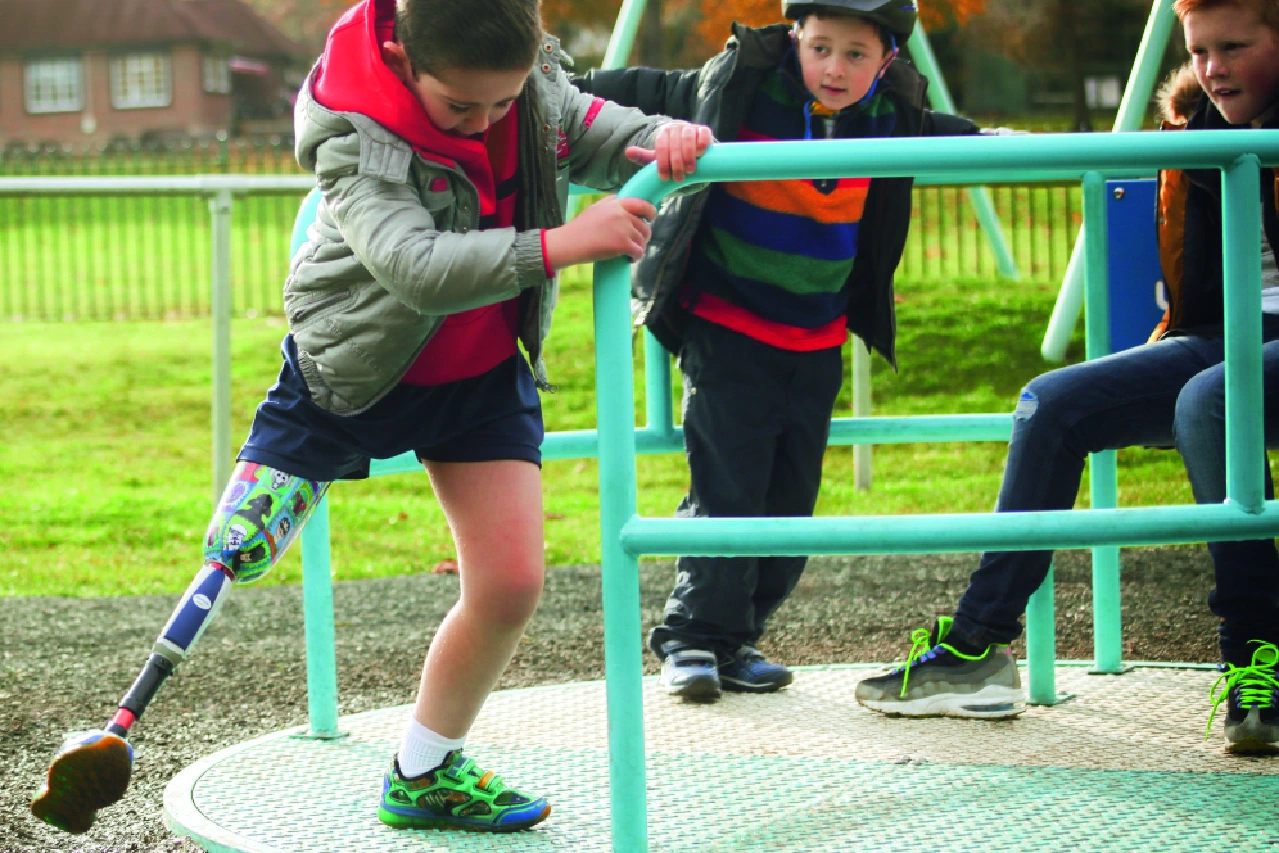Prosthetics have come a long way, offering life-changing benefits to those who need them, including children. For young amputees, a prosthetic limb can mean the difference between leading an active, independent life and facing significant limitations. However, providing prosthetics for growing children presents unique challenges that go beyond those encountered with adult prosthetic users. From physical growth and development to psychological adjustments, these challenges require thoughtful solutions and a commitment to ongoing support. In this article, we’ll explore the key challenges faced in providing prosthetics to children and how experts and families navigate these complexities.
1. Frequent Adjustments and Replacements
One of the most significant challenges in providing prosthetics for children is the constant need for adjustments and replacements due to growth. Unlike adults, who typically maintain a stable body size, children grow rapidly, especially during their formative years. This means that a prosthetic limb that fits well today may become uncomfortable or even unusable in just a few months.
- Growth Spurts: Children experience periods of rapid growth, which can cause a prosthetic limb to become too tight or too short. During these times, prosthetic adjustments need to be made frequently to ensure the device remains comfortable and functional. This involves lengthening, resizing, or even creating new prosthetics altogether, which can be costly and time-consuming for families.
- Outgrowing Components: The sockets and other components of a prosthetic must be adapted to a child’s changing size. As the child grows, the size and shape of the residual limb change, necessitating new fittings. This creates a unique challenge for prosthetists, who must balance creating durable devices with the need for adaptability.
2. Financial Burden on Families
Providing a child with the right prosthetic limb can place a considerable financial burden on families. With the frequent need for replacements and adjustments, the costs can add up quickly, and not all families have access to the necessary financial resources or insurance coverage.
- Cost of Prosthetics: High-quality prosthetic limbs, especially those designed for active children, can be very expensive. A single prosthetic limb can cost thousands of dollars, and with the need for regular replacements, this expense becomes a recurring one.
- Limited Insurance Coverage: While some insurance plans may cover prosthetics for children, they often have limitations. For example, insurance may only cover a new prosthetic every two to three years, which may not be sufficient for a growing child. Additionally, some plans may not cover specialized prosthetics needed for activities like sports or swimming.
- Access to Financial Assistance: Some organizations and charities provide financial assistance for families in need, but navigating these resources can be complex and time-consuming. Families often need to advocate strongly to ensure their child receives the prosthetic care they need.
3. Designing Prosthetics for Active Lifestyles
Children are naturally active, and their prosthetics need to keep up with their energy levels. From playing sports to running around with friends, a child’s prosthetic limb must be durable, flexible, and able to withstand the wear and tear of everyday activities. Designing prosthetics that can meet these needs while remaining comfortable is a complex challenge.
- Durability vs. Comfort: Creating a prosthetic limb that is both durable enough to handle a child’s active lifestyle and comfortable enough to wear for extended periods can be difficult. Prosthetics need to be lightweight to avoid putting undue stress on a child’s residual limb while also being strong enough to handle physical activities like running and climbing.
- Specialized Prosthetics: For children who want to participate in sports, swim, or engage in other specialized activities, custom prosthetic devices may be required. For example, a child who enjoys swimming may need a waterproof prosthetic, while a young athlete may require a running blade. These specialized prosthetics can be even more costly and may need to be custom-made to fit the child’s needs.
4. Emotional and Psychological Adjustment
Adjusting to life with a prosthetic limb can be emotionally challenging, especially for children who may not fully understand why they are different from their peers. Helping a child accept and adapt to their prosthetic is a critical part of the process, and it requires support from family members, teachers, and mental health professionals.
- Body Image and Self-Esteem: Many children with prosthetic limbs struggle with body image and self-esteem issues, especially as they become more aware of their differences. Children may feel self-conscious about their prosthetics, particularly in social situations or when participating in physical activities. This can lead to feelings of isolation or frustration.
- Building Resilience: Encouraging resilience and a positive mindset is essential for helping children adapt to their prosthetics. Support groups, therapy, and mentorship from other amputees can help children feel less alone and more empowered in their journey. Families play a crucial role in fostering this positive attitude, celebrating small victories, and emphasizing what their child can do rather than focusing on limitations.
- Counseling and Support: Access to psychological counseling can make a significant difference for young amputees, helping them process feelings of grief or anger that may arise from their situation. However, not all families have access to these resources, making it a challenge to address the emotional needs of their child effectively.
5. Finding Qualified Prosthetists and Access to Care
Access to specialized care is crucial for children who need prosthetics, but finding experienced prosthetists who can work with young patients can be a challenge, particularly in rural or underserved areas.
- Specialized Care Needs: Working with children requires a prosthetist who not only understands the technical aspects of creating prosthetics but also has experience working with young patients and their unique needs. A child’s prosthetist must be patient, understanding, and able to communicate effectively with both the child and their family.
- Travel for Appointments: In some regions, families may have to travel long distances to find a qualified prosthetist, making the process of getting adjustments or replacements even more challenging. This adds additional financial and time burdens, which can be difficult for families to manage.
- Limited Access to Advanced Technology: Not all families have access to the latest prosthetic technology, especially if they live in remote areas. Advanced technologies like 3D-printed prosthetics or bionic limbs may be out of reach due to location or cost, limiting the options available for their child.
Conclusion: A Holistic Approach is Key
Providing prosthetics for growing children involves a unique set of challenges that go beyond simply fitting a device. From addressing the physical realities of growth to managing the emotional well-being of young amputees, a holistic approach is needed to ensure that children thrive with their prosthetics. Collaboration between families, healthcare providers, schools, and support organizations is essential in navigating these complexities.
Despite the challenges, the advancements in prosthetic technology and the resilience of young amputees offer hope. With the right support and access to resources, children with prosthetic limbs can lead active, fulfilling lives, embracing the opportunities that come their way. By understanding and addressing the challenges involved, we can ensure that these young individuals receive the care they deserve, allowing them to grow, play, and dream without limits.





